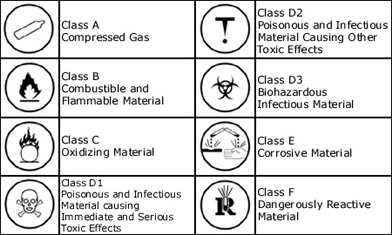This group includeds health and safety courses for general employee orientation, and courses on information security relating to Controlled Goods and ITAR.

Participants successfully completing the program will be able to:
-
Identify hazardous energy as a workplace danger
-
Describe common forms of energy and hazardous energy in the workplace
-
Explain components of a hazardous energy control program
-
Explain government regulations relating to Lockout/Tagout
-
Identify Lockout as the primary procedure in hazardous energy control
-
Explain when Lockout should be implemented
-
Explain why Lockout is important in the workplace
-
Describe seven unique steps in a Lockout procedure
-
Describe group Lockout and correct Lockout scenario
-
Explain the roles and responsibilities of personnel in the workplace
-
Explain who has authorization to perform Lockout
-
Describe the impact and importance of visible communication
-
identify tagout as having a supporting role in hazardous energy control
-
Explain how Tagout differs from Lockout
-
Describe the Tagout process

This comprehensive interactive multimedia program is intended for all employees who need an introduction to WHMIS labeling standards and requirements, Material Safety Data Sheets, and basic emergency procedures.
Participants successfully completing the program will be able to:
-
Describe the function of WHMIS, and relate each WHMIS symbol to the specific class of hazard it represents.
-
Differentiate between the different types of labels.
-
Explain the routes of entry.
-
Identify the basic information found on an MSDS, and relate this information to specific precautions.
-
Describe their role and responsibility regarding procedures that help maintain a safe work environment.

A comprehensive interactive multimedia learning program with certification intended for electronic operators, technicians, and engineers, who work with and around lasers.
Participants successfully completing the program will be able to:
-
Understand light as energy and energy conversion.
-
Name the types of injuries that can occur.
-
Describe and identify laser classifications and warning labels.
-
Explain concepts related to the Nominal Hazard Zone.
-
Identify the structure of the eye and relate the structure to the potential for accidental exposure and injury.
-
Describe the concept of Maximum Permissible Exposure.
-
Describe appropriate safety procedures in the use of laser safety eyewear and clothing.
-
Describe the notion of optical density, wavelength dependencies, selection and handling of laser safety eyewear.
-
Identify correct procedures for placement, lockout and tagout, barriers and traps, and hazardous materials.

Employees in any company involved in a business that includes defense articles or services must have an understanding of - and comply with - U.S. Export Controls requirements including the International Traffic in Arms Regulations (ITAR) and the Export Administration Regulations (EAR). This course describes the function and purpose of each of these within the company.

Employees in any company in Canada involved in a business that includes defense articles or services must have an understanding of - and comply with - the requirements of the Controlled Goods Program (CGP) and Canadian Export Controls. This course describes the function and purpose of each of these within the company.